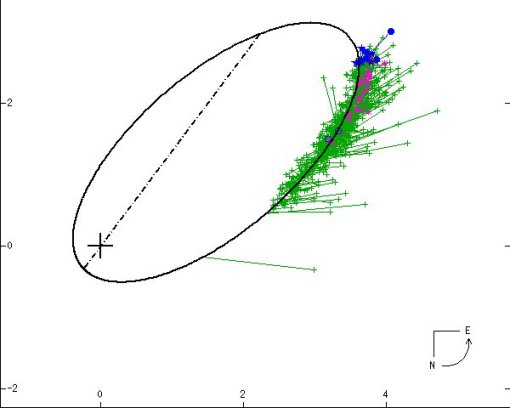
 |
The relatively short interval of observation is insuffient to constrain Algieba's orbit very well. From the best fit to the data, Gamma-2 Leo orbits Gamma-1 (at the cross, in reality the pair orbiting each other) over a 510 year period at an average separation of 170 AU with a high eccentricity. The major axis of the orbit (the dot-dash line) is offset because of the high (76 degree) orbital tilt to the plane of the sky. The orbital parameters, however, give a sum of masses far too high, showing a far longer period of observation is needed. From the Sixth Catalog of Orbits of Visual Binary Stars , W. I. Hartkopf and B. D. Mason, US Naval Observatory Double Star Catalog, 2006. |